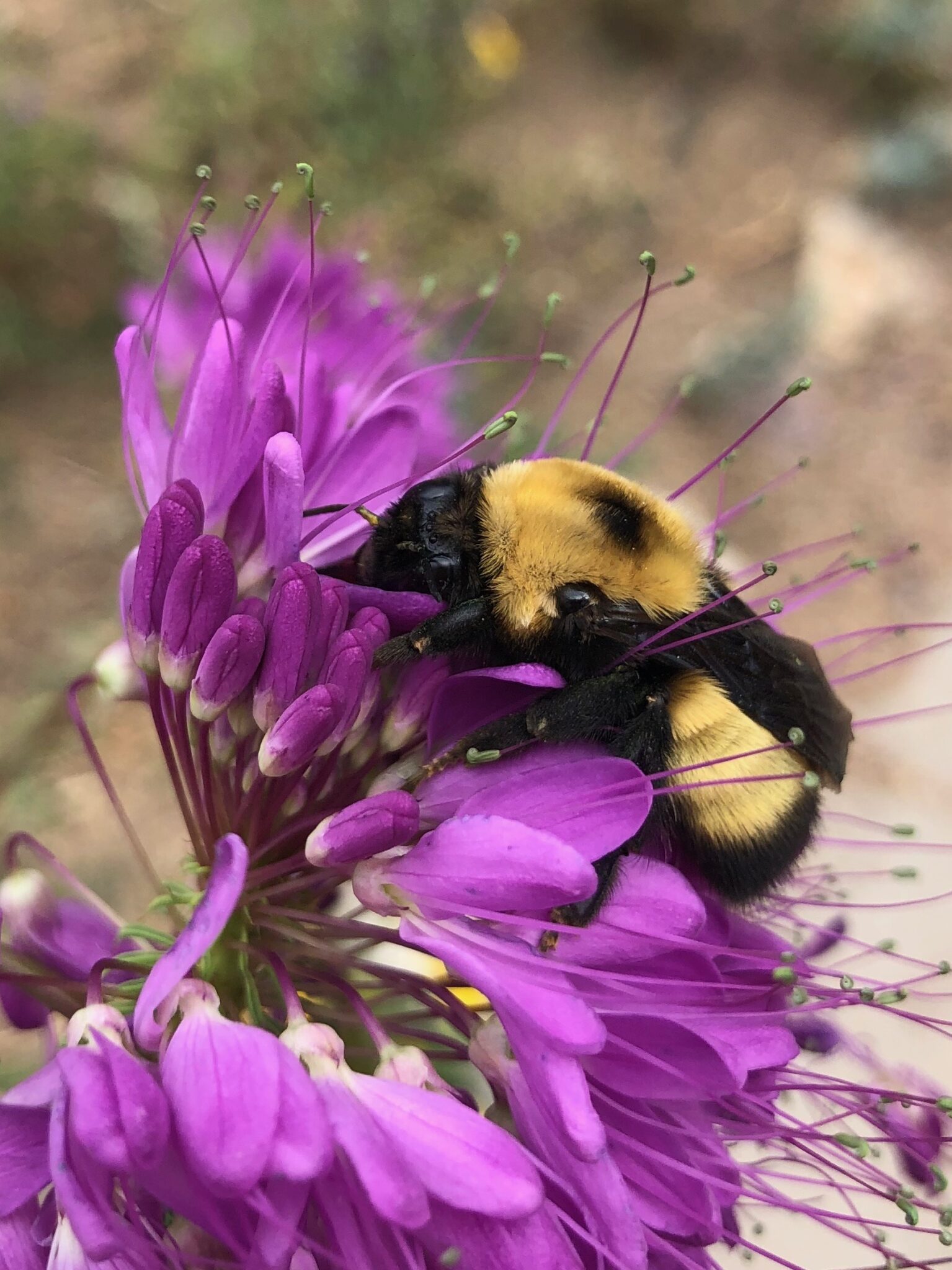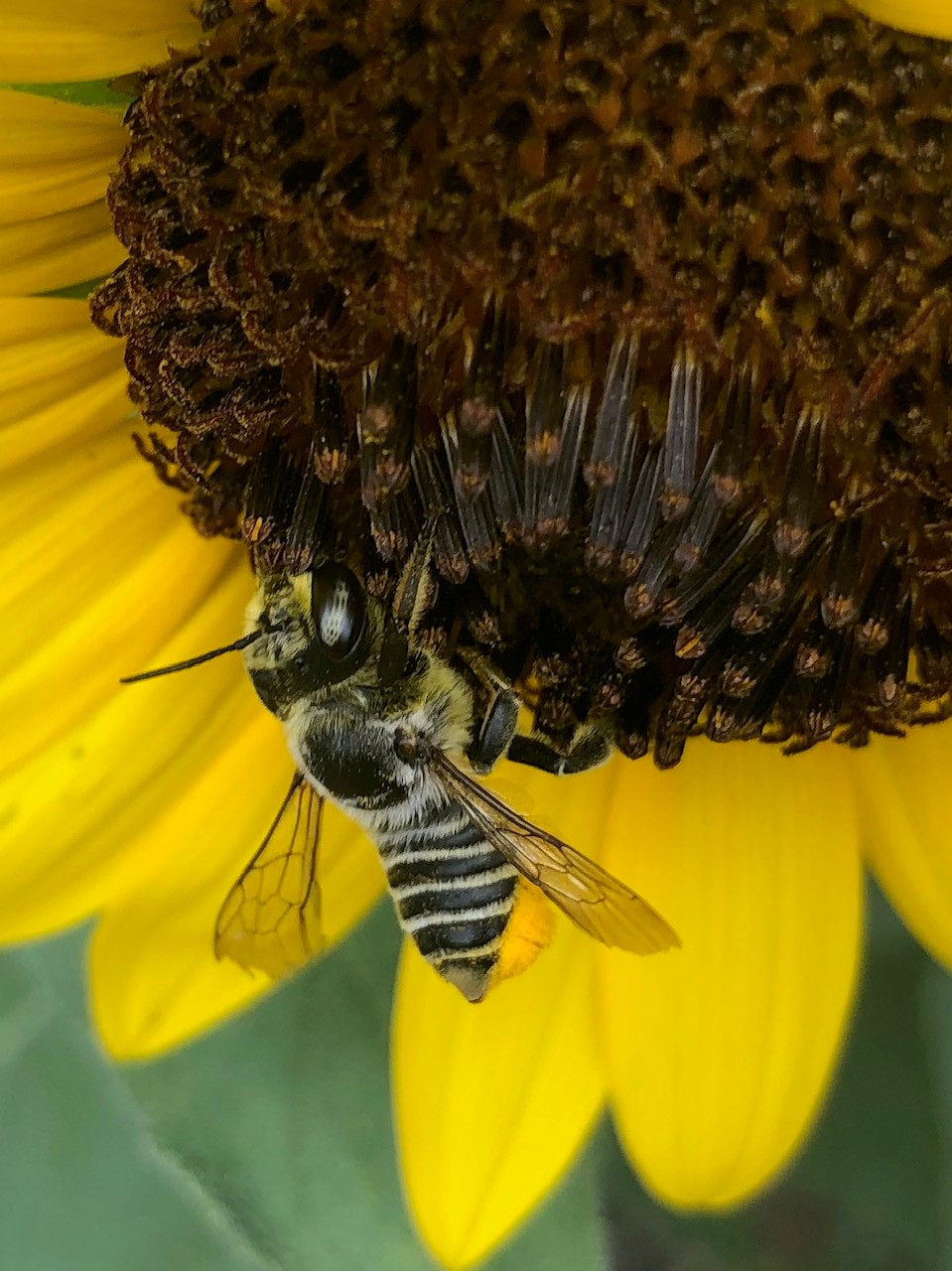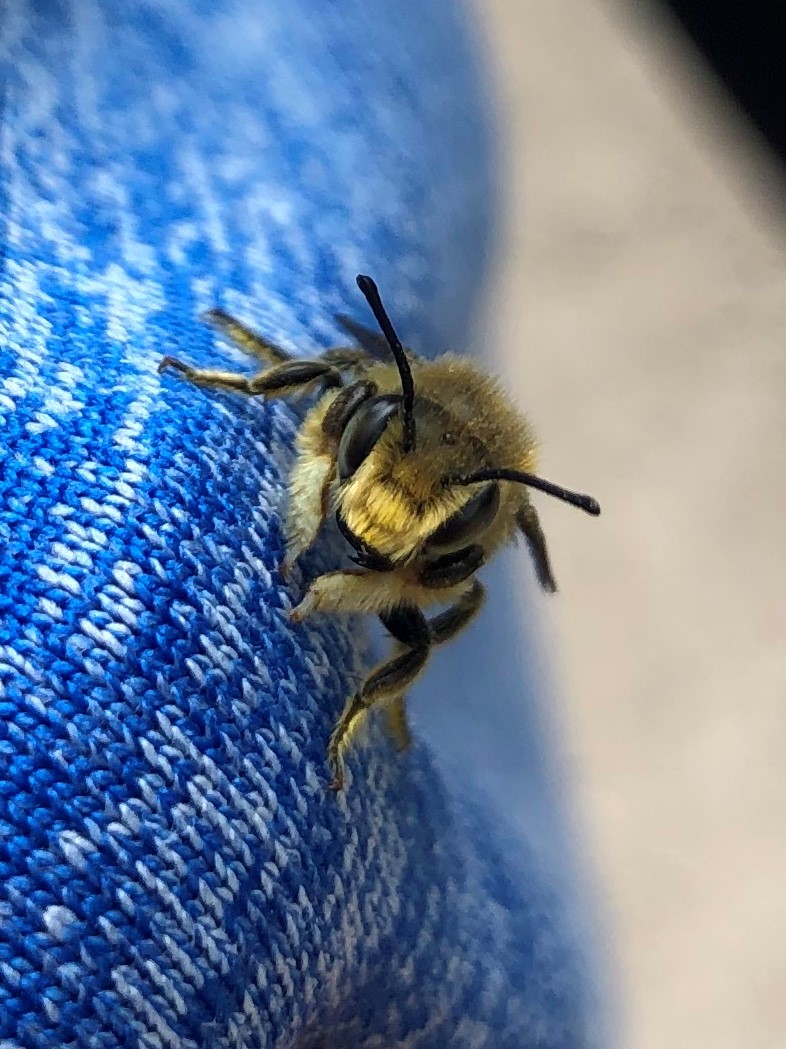



Photos provided by Lisa Mason.
Artificial intelligence aiding bee conservation is more than a sci-fi fantasy — it’s a reality at Colorado State University, funded by the National Science Foundation.
An interdisciplinary team, including partners at CSU Extension, the Department of Computer Science and the School of Education, received an $845,000 grant from the NSF to leverage the power of community science and novel AI models to help monitor and record the health of over 900 pollinator species across Colorado.
“This kind of research really is a new frontier, and if all goes well, we’ll just be getting started,” said Nathaniel Blanchard, assistant professor of computer science at CSU.
Bees play a critical role in human life, pollinating three quarters of all the crops we eat, and their conservation is paramount in the face of a changing climate. Recently, pollinator health was at the forefront of Colorado public policy, as Gov. Jared Polis in partnership with CSU released the Colorado Native Pollinating Insects Health Study.
Scaling Native Bee Watch
Native Bee Watch (NBW), a community science biodiversity monitoring program, found a permanent home in CSU Extension in 2019. Extension aims to fulfill CSU’s land grant mission by bringing the latest research and education to communities across Colorado.
NBW utilizes volunteer power to record and monitor bee activity throughout the state, aiding homeowners, ecologists and municipal planners in their efforts to conserve wild bee populations. During the pandemic, the program migrated online and became available statewide, a shift that drew in 300 new volunteers — a big increase from the program’s previous annual 20.
“The high level of interest from volunteers is a testament to how important pollinator conservation is to Coloradans,” said Lisa Mason, founder and director of NBW, and horticulture specialist with CSU Extension. “We couldn’t make this program happen without the dedication from volunteers. Their excitement is contagious especially when they start seeing the bees they’ve just learned to identify.”
The increase in participation was so rapid that NBW’s virtual training for new volunteers just couldn’t scale fast enough. Thus, a collaboration with CSU’s Department of Computer Science was formed. The mission? A personalized AI algorithm that, via an app, could use modern pedagogies and nimble AI to train new volunteers, adapting curriculum to that specific volunteer’s level of experience.
Creating novel AI
To create this new AI, CSU computer scientists have three essential tasks to complete. First, the AI model must be able to identify bees based on images and a broad array of volunteer input, a task easier said than done as many bees can only be identified at the species level while under a microscope, and many volunteers are still learning how to properly identify the bees they’re seeing.
“If we have an AI that is good enough at identifying bees on its own, then we can use that to train volunteers and verify their observational data, which then creates a research-quality ecological data set,” said Jill Zarestky, an associate professor in the School of Education, “… then we can start to say things about the prevalence and distribution of native bees in Colorado.”
Second, the model must support adult learners from a diverse set of backgrounds, estimate their expertise, and provide adapted lessons and feedback specifically tailored to the learner’s current background. This is called explainable AI. The quality of the AI’s feedback is essential to ensuring the data collected by volunteers is scientifically and ecologically accurate.
The challenge for computer scientists comes in the sheer diversity of learners — unlike a classroom environment, there are no controls or known factors about the volunteers and their level knowledge — and the diversity of bee species, as well as the numerous flies and wasps that mimic bees as a defense mechanism.
A novice volunteer might note that they observed a bee — even if they saw a wasp or a fly — and upload a photo of their observation. The addition of a photo provides the AI an opportunity to assess the accuracy of the volunteer’s data. By automatically catching identification mistakes, the AI can ensure the integrity of the data and pinpoint specific areas where the user could benefit from additional training, such as distinguishing bee mimics from the real thing or tips on how to gather high-quality supporting evidence for their claims.
The final component is creating the human-AI interface: an app that can deliver the adaptable trainings.
Researchers in the School of Education will provide expertise on how to best classify and train different types of learners.
“‘What’s the right way to structure lessons?’ ‘What kind of questions should you ask?’ Those are all decisions that are coming from our educational experts,” said Sarath Sreedharan, assistant professor of computer science at CSU. “We are going to be building this around very sound pedagogical theories, but how do we take those educational concepts and convert them first into math and then into software? Right now we are focusing on the theory and the software for this project, the foundations that the final tool will be built upon later.”
Impacts from the minute to the existential
The impact of this research ranges from the minute to the existential.
“Community science gets people outside,” said Mason. “It gets people to slow down and observe their own environment. One thing I like about pollinator and insect conservation is that everyone can be part of the solution.”
From a community vantage point, such activities allow for two-way communication and input between the community and the university.
“I think this is an opportunity for research expertise to feed into extension, then feed out into the community and then the community feeds back into the research,” said Zarestky. “That is not a loop that we often get to close.”
At the national level, the team hopes that their algorithms will go on to make community science more viable and scalable.
“We hope that this project results in a template for automation that other community science and adult science education programs could easily adapt,” said Nikhil Krishnaswamy, an assistant professor of computer science at CSU.
Beyond scaling this work to support other community science programs, this research has more existential implications about human-AI learning.
“Since AI is in the news a lot for its association with creating misinformation and spreading propaganda, I hope that applications of AI to areas like community science can show a different paradigm in which AI becomes a tool that helps people think more scientifically and reason better,” said Krishnaswamy.
Native Bee Watch is open to anyone statewide. To stay up-to-date or participate in the program, visit NativeBeeWatch.org and sign up to receive newsletters.